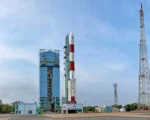ISRO Gears Up to Position Aditya-L1 Spacecraft in Its Ultimate Orbit: Here’s What You Need to Know

ISRO to Execute Final Manoeuvre to Position Aditya-L1 Spacecraft in Its Ultimate Orbit at Approximately 4 PM on Saturday.
ISRO will perform the final manoeuvre on Saturday to inject Aditya-L1 spacecraft — the first space-based Indian observatory to study the Sun — into its final destination orbit, some 1.5 million kilometres from the Earth. According to ISRO officials, the spacecraft will be placed in a halo orbit around Lagrange point 1 (L1) of the Sun-Earth system, about 1.5 million km from the Earth. The L1 point is about one per cent of the total distance between the Earth and the Sun.
A satellite in a halo orbit around the L1 point has the major advantage of continuously viewing the Sun without any occultations/eclipses, they said, adding, this will provide a greater advantage in observing solar activities and its effect on space weather in real time.
“This manoeuvre (at around 4pm on Saturday) will bind the Aditya-L1 to a halo orbit around L1. If we don’t do this, there is a possibility that it will continue its journey, maybe towards the Sun,” an ISRO official told PTI on Friday.
The Polar Satellite Launch Vehicle (PSLV-C57) launched the Aditya-L1 spacecraft from the second launch pad of Satish Dhawan Space Centre (SDSC), Sriharikota, on September 2 last year.
After a flight duration of 63 minutes and 20 seconds, it was successfully injected into an elliptical orbit of 235×19500 km around the Earth.
The spacecraft underwent a series of manoeuvres thereafter and headed Sun-Earth Lagrange Point 1(L1), having escaped the Earth’s sphere of influence.
The spacecraft carries seven payloads to observe the photosphere, chromosphere and the outermost layers of the Sun (the corona) using electromagnetic and particle and magnetic field detectors.
“Using the special vantage point L1, four payloads directly view the Sun and the remaining three payloads carry out in-situ studies of particles and fields at the Lagrange point L1, thus providing important scientific studies of the propagatory effect of solar dynamics in the interplanetary medium,” according to the space agency.
The suits of Aditya L1 payloads are expected to provide the “most crucial information” to understand the problem of coronal heating, coronal mass ejection, pre-flare and flare activities and their characteristics, dynamics of space weather, and propagation of particles and fields, officials said.
Aditya-L1 Mission Objectives:
1. Investigate the dynamics of the solar upper atmosphere, including the chromosphere and corona.
2. Study chromospheric and coronal heating, exploring the physics of partially ionized plasma, and investigate the initiation of coronal mass ejections (CMEs) and solar flares.
3. Observe the in-situ particle and plasma environment to provide data for understanding particle dynamics emanating from the Sun.
4. Explore the physics of the solar corona and mechanisms involved in its heating.
5. Diagnose plasma in coronal loops, measuring temperature, velocity, and density.
6. Investigate the development, dynamics, and origins of coronal mass ejections (CMEs).
7. Identify the sequence of processes occurring at various layers (chromosphere, base, and extended corona) leading to solar eruptive events.
8. Study magnetic field topology and measure magnetic fields in the solar corona.
9. Explore the drivers for space weather, including the origin, composition, and dynamics of solar wind.





















